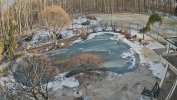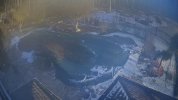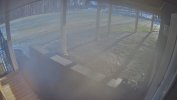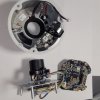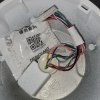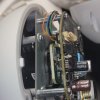I have some lens clouding that has developed on a few of my Hikvision turret style cameras over the last 2-3 years. I thought they were just dirty, but after using some glass cleaner on a microfiber towel, it seems pretty clear that this is from moisture intrusion on the inner glass.
Image quality on those cams is severely compromised right now. The first two pictures are still snapshots from two Hikvision 4K turrets over my pool deck. Both are the same camera model. The images speak for themselves. The third picture is another severely affected camera.
I'm just wondering if it is possible to disassemble them for cleaning. If so, if anyone can point me toward instructions on how to do it, I would appreciate it.
Image quality on those cams is severely compromised right now. The first two pictures are still snapshots from two Hikvision 4K turrets over my pool deck. Both are the same camera model. The images speak for themselves. The third picture is another severely affected camera.
I'm just wondering if it is possible to disassemble them for cleaning. If so, if anyone can point me toward instructions on how to do it, I would appreciate it.

